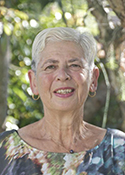Watson
Margin: Labor 9.2%
Region: Southern Sydney, New South Wales
In a nutshell: Tony Burke remains secure in his seat in inner southern Sydney, despite a heavy swing to the Liberals in 2010 followed by a milder one in 2013.
Candidates in ballot paper order

|
VIOLET ABDULLA TOM GORDON TONY BURKE PAUL GERAN BARBARA BLOCH MOHAMMAD SHAHE ZAMAN |
Held by senior Labor front-bencher Tony Burke, the electorate of Watson covers inner suburban territory roughly 15 kilometres south-west of central Sydney, from Strathfield and Burwood Heights at the city end to Punchbowl and Lakemba further afield. The electorate was called St George from its creation in 1949 until 1993, reflecting the unofficial name of the Hurstville, Rockdale and Kogarah area of Sydney on which it had been centred. Watson was drawn further away from its traditional base when the 2010 redistribution abolished its northern neighbour, Lowe, from which it absorbed southern Strathfield and Burwood Heights, while losing Earlwood and Kingsgrove in the south. The current redistribution adds 12,000 voters in Ashbury and southern Ashfield from Grayndler in the east, 3500 in southern Punchbowl from Banks in the south-west, 3000 in northern Kingsgrove and Beverly Hills from Barton in the south-east, and 3000 in part of Lidcombe from Reid in the north. This is balanced by transfers of 13,000 in southern Strathfield and Burwood to Reid, and 5000 in southern Campsie and Canterbury to Barton. The changes have boosted the Labor margin from 6.8% to 9.2%.
The St George electorate was a classic middle suburban seat for much of its history, and it frequently changed hands up to 1980, when Whitlam government minister Bill Morrison recovered the seat two terms after his defeat in 1975. The unsuccessful candidate at the intervening election in 1977 was Antony Whitlam, son of Gough Whitlam, who had held Grayndler in the previous term. Morrison was succeeded in 1984 by Stephen Dubois, whose retirement in 1993 coincided with an electoral rearrangement that abolished the Bondi-area electorate of Phillip. Labor’s member for Phillip, Jeannette McHugh, was accommodated in Grayndler, and Right faction heavyweight Leo McLeay moved from Grayndler to Watson. By this time, Labor’s grip had tightened due to demographic change that has left Watson with the nation’s third highest proportion of non-English speakers, most notably through the concentration of Lebanese around Punchbowl. Nonetheless, there was a particularly big swing against Labor amid the Sydney-wide backlash of 2010, cutting the existing 18.2% margin exactly in half, followed by a further 2.3% swing to the Liberals in 2013.
Leo McLeay was succeeed on his retirement in 2004 by Tony Burke, who had entered politics the previous year in the state upper house. Burke won swift promotion to the shadow ministry in 2005, going on to serve in cabinet as Agriculture, Forestry and Fisheries Minister in the Rudd-Gillard government’s first term, and as Sustainability, Environment, Water, Populations and Communities Minister (further gaining arts in March 2013) in its second. Burke was a resolute supporter of Julia Gillard’s leadership, and spoke publicly of the “chaos” of Kevin Rudd’s prime ministership when he launched his unsuccessful challenge in February 2012. Rudd nonetheless refused to accept Burke’s resignation after the success of his leadership challenge in June 2013, instead persuading him to accept the challenging immigration, multicultural affairs and citizenship portfolio. Burke has served as Shadow Finance Minister since the 2013 election defeat.
Analysis by William Bowe. Read William’s blog, The Poll Bludger.


